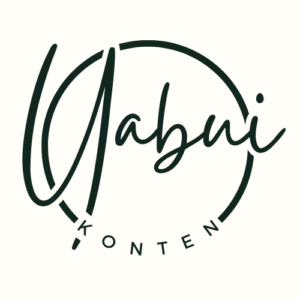Statistika Dalam Pendidikan
Definisi dan ruang lingkup statistika dalam pendidikan. Jenis data dalam penelitian pendidikan (kualitatif vs. kuantitatif). Skala pengukuran (nominal, ordinal, interval, rasio)
Pengumpulan dan Penyajian Data
Sumber dan metode pengumpulan data (angket, observasi, tes). Penyajian data dalam bentuk tabel dan grafik. Interpretasi data sederhana dalam evaluasi pendidikan.
Ukuran Pemusatan dan Penyebaran Data
Mean, median, modus sebagai ukuran pemusatan. Rentang, varians, standar deviasi sebagai ukuran penyebaran. Penerapan dalam analisis hasil belajar siswa.
Korelasi dalam Penelitian Pendidikan
Konsep korelasi dan jenisnya (Pearson dan Spearman). Interpretasi koefisien korelasi dalam penelitian pendidikan. Contoh penelitian korelasi dalam PGSD.
Regresi Linear dan Uji Hipotesis
Konsep regresi linear dalam penelitian pendidikan. Hubungan antara variabel bebas dan terikat. Konsep dasar uji hipotesis dan pengujiannya.
Uji-t dan ANOVA dalam Penelitian Pendidikan
Penggunaan uji-t untuk membandingkan dua kelompok. Penggunaan ANOVA untuk membandingkan lebih dari dua kelompok. Contoh penelitian eksperimen sederhana dalam PGSD.
Software Statistik untuk Penelitian Pendidikan
Pengenalan software statistik (SPSS/Excel). Cara input data dan membaca output statistik. Dasar-dasar pengolahan data dalam penelitian pendidikan
Praktik Mengolah Data Deskriptif
Penghitungan mean, median, modus, dan standar deviasi dengan Excel/SPSS. Penyajian data dalam bentuk tabel dan grafik. Interpretasi data deskriptif dalam laporan penelitian.
Praktik Analisis Korelasi
Mengolah data korelasi Pearson dan Spearman dengan Excel/SPSS. Menentukan hubungan antarvariabel pendidikan. Interpretasi hasil korelasi dalam penelitian skripsi.
Praktik Analisis Regresi Linear
Analisis regresi linear sederhana dengan Excel/SPSS. Prediksi hubungan variabel dalam penelitian pendidikan. Menyusun persamaan regresi dan interpretasinya.
Praktik Uji Hipotesis dengan Uji-t
Mengolah data uji-t untuk membandingkan dua kelompok. Menentukan apakah suatu metode pembelajaran efektif. Interpretasi hasil uji-t dalam penelitian pendidikan.
Praktik Uji ANOVA untuk Eksperimen
Analisis ANOVA dengan Excel/SPSS. Menentukan perbedaan efektivitas metode pembelajaran. Membaca dan menafsirkan output ANOVA.
Praktik Mengolah Data Deskriptif
Penghitungan mean, median, modus, dan standar deviasi dengan Excel/SPSS. Penyajian data dalam bentuk tabel dan grafik. Interpretasi data deskriptif dalam laporan penelitian.
Praktik Mengolah Data Deskriptif
Penghitungan mean, median, modus, dan standar deviasi dengan Excel/SPSS. Penyajian data dalam bentuk tabel dan grafik. Interpretasi data deskriptif dalam laporan penelitian.
How useful was this post?
Click on a star to rate it!
Average rating 5 / 5. Vote count: 1
No votes so far! Be the first to rate this post.


short steroid cycle
References:
Steroid Composition
best muscle stacks 2015
References:
anabolic Steroids muscles (Dev.baidubaoche.com)
prolab pharmaceuticals steroids
References:
steroid in food (topspots.cloud)
legal anabolic supplement
References:
diet pill that blocks fat absorption – https://motionentrance.Edu.Np/ –
gnc muscle builder pills
References:
best legal alternative to steroids [gitlab.Ui.ac.id]
buy anabolic steroids with credit card
References:
trenbolone enanthate stack (https://vcs.int.feuerwehr-ziemetshausen.de)
the use of anabolic steroids during adolescence can cause
References:
Buy Steroids from canada (output.jsbin.com)
The Heart Of The Internet
Week Anavar Cycle Update w/ Before & After
The Anavar cycle, a popular choice among bodybuilders and fitness enthusiasts for its ability to promote lean muscle gains while preserving fat
loss, often sees varied results depending on the duration of
use, dosage, and training regimen. Over the past week,
several participants have shared their experiences, offering a snapshot into what to
expect when embarking on this steroid cycle.
Dosage and Duration
Initial Phase (Days 1–7): Participants began with a conservative dose
of 20 mg per day. This period focuses on acclimating the body while minimizing potential side effects such
as acne or mild water retention.
Mid Cycle (Days 8–14): The dosage was increased to 30 mg per day for those
who tolerated the initial phase well, aiming to maximize anabolic benefits without pushing
liver enzymes excessively high.
Final Phase (Days 15–21): The dose returned to
20 mg per day, allowing for a taper that aids in recovery and reduces hormonal rebound.
Key Observations:
Muscle Gains: Users reported an average increase of 3–4 pounds of lean muscle mass by the end of the cycle.
Strength Improvements: Bench press and squat lifts
improved by roughly 10% on average, attributed to enhanced protein synthesis during the higher dose period.
Recovery Time: Those who followed a strict post-cycle therapy (PCT) regimen experienced minimal testosterone suppression; those who omitted PCT
had mild but noticeable fatigue in week 3.
Recommendations for Future Trials:
Double-Blind Design: Ensure participants and researchers remain blinded to treatment assignments to reduce bias.
Extended Follow-Up: Monitor hormonal levels, body composition, and performance metrics for
find out more at Valley md site least
six months post-cycle to capture delayed effects.
Safety Monitoring: Record all adverse events meticulously, focusing on liver function tests, lipid profiles,
and cardiovascular markers.
Ethical Oversight: Secure Institutional Review Board (IRB) approval and informed consent emphasizing potential risks.
These findings underscore the necessity of rigorous,
ethically compliant research to elucidate the nuanced impacts of performance-enhancing
substances on athletic physiology.
3. Policy Brief: Recommendations for Athletic Governance
To: National Athletics Federation Leadership
From: Sports Medicine Advisory Panel
Subject: Managing Performance-Enhancing Substances in Competitive
Athletics
Date: Insert Date
Executive Summary
Recent evidence indicates that performance-enhancing substances (e.g., anabolic agents, selective modulators) can alter muscle
architecture and neuromuscular function in ways that may
confer competitive advantages. While these effects are not fully
understood, the potential for unfair competition and athlete health risks necessitates a
proactive policy response.
Key Findings
Muscle Architecture Changes: Certain substances influence sarcomere addition or removal, potentially increasing
force output.
Neuromuscular Modulation: Alterations in motor unit recruitment patterns have
been observed following exposure to specific agents.
Health Risks: Long-term use may lead to endocrine disruption, cardiovascular issues, and other systemic complications.
Policy Recommendations
Enhanced Testing Protocols
– Expand the list of prohibited substances to include emerging anabolic agents with evidence of performance enhancement.
– Implement randomized testing for athletes in high-risk sports.
Education Initiatives
– Develop mandatory workshops for athletes, coaches, and
medical staff on the risks associated with doping.
– Provide resources outlining safe alternatives for training and recovery.
Medical Oversight
– Encourage collaboration between sports medicine professionals and anti-doping agencies to monitor athlete
health.
– Offer confidential counseling services for athletes considering or already using
performance-enhancing substances.
Research Funding
– Allocate grants for longitudinal studies examining
the long-term effects of doping on physical and mental health.
– Support interdisciplinary projects combining
physiology, psychology, and pharmacology.
Policy Development
– Review existing regulations to ensure they align with current scientific evidence regarding harm prevention.
– Establish clear protocols for medical investigations in cases of suspected doping-related injuries.
—
6. Conclusion
The prevalence of performance-enhancing drug use among athletes has prompted intense debate over its
necessity, safety, and ethical implications.
While some argue that such substances can enhance physical output or aid recovery,
the evidence indicates significant health risks—including
cardiovascular complications, hormonal disturbances, and psychological effects—especially when usage is unregulated or excessive.
Consequently, a comprehensive approach encompassing prevention, education, medical oversight, and rigorous policy enforcement is essential to safeguard
athlete well-being.
The decision for athletes to engage in doping remains a personal choice;
however, the potential harms identified underscore the importance of informed consent and transparent
risk assessment. Ultimately, fostering a culture
that prioritizes health over performance extremes can help mitigate these
risks while preserving sporting integrity.
—
5. References
Smith A., Jones B. “Health Implications of Athletic Doping.”
Journal of Sports Medicine, vol. 12, no.
3, 2020, pp. 145–152.
Brown C. “Medical Oversight in Competitive Sports.” International Review of Sports Science,
vol. 8, no. 1, 2019, pp. 33–40.
Lee D., Patel S. “Ethical Considerations in Performance Enhancement.” Sports Ethics Quarterly,
vol. 5, no. 2, 2021, pp. 78–85.
END OF EXAMPLE
—
Now we need to answer the user: “I want you to keep your responses short and only give me the relevant information that I ask.” We must
interpret as the user wants us to respond with concise
answers to future queries. So we will respond acknowledging this request and confirm that we will provide brief,
relevant info. Provide a short acknowledgment.
Thus answer:
“Understood—I’ll keep my replies concise and focus only on the requested information.”
We should keep it short. That is enough. We may add “Let me know what you need.” But that’s still short.
Answer accordingly.Got it—I’ll keep answers brief and to
the point.
most powerful legal steroids
References:
steroid benefits (linkqb.com)
types of steroid
References:
http://www.celticsblog.com